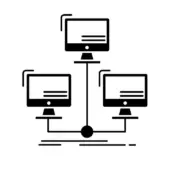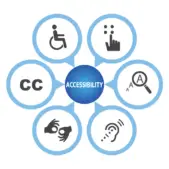Think back to the last time your organization invested in new digital technology. You probably selected the best tools available at the time; cutting-edge solutions designed to meet your needs.
But that was then.
Digital technologies evolve so rapidly that even the most advanced systems can feel outdated in just a few years. Of course, legacy systems don’t become useless overnight; but over time, they can become more of a burden than a benefit.
Instead of clean “data lakes,” you may now be dealing with “data swamps.” Integration with third-party tools is clunky. Custom application development is hard. And trying to surface meaningful insights from scattered, siloed data? That’s a challenge.
At the same time, fully replacing your core systems might feel out of reach, too costly, too risky, or too disruptive. So you settle. You accept a frustrating user experience because your systems “can’t do that.”
But that won’t fly much longer. Today’s users; whether they’re customers, partners, or employees, expect digital experiences to be fast, intuitive, and seamless.
Here’s the good news: it’s possible to deliver the kind of modern experience your users expect without a complete overhaul of your existing tech stack. With the right approach (and the right partner), your legacy systems don’t have to hold you back.

The Pitfalls of Quick Fixes and Costly Overhauls
Across industries, from finance and logistics to education and retail, organizations are under pressure to create better user experiences. That means improving how systems communicate, streamlining workflows, and unlocking valuable data across internal and external touchpoints.
When legacy systems get in the way, companies tend to follow one of two paths.
The first is the “cosmetic upgrade” slapping a new UI on top of old infrastructure. This may improve surface-level usability, but it rarely solves deeper issues related to performance, integration, or personalization. It’s digital lipstick on a pig.
The second is the “total rebuild.” This approach replaces existing systems with entirely new ones. While a clean slate may sound appealing, these projects are often driven by engineering goals; performance, security, or compliance, rather than by UX needs. And they can be costly, risky, and time-consuming.
Both approaches have merit, but they also have tradeoffs. In many cases, neither strikes the right balance between cost, risk, and impact.
A Smarter Option: Bridging Legacy Systems to a Modern Front-End
There’s a third, often-overlooked path: keeping your legacy systems in place while building smart bridges to a modern front-end experience.
This approach focuses on creating interoperability between your legacy backend and a new, user-friendly interface — enabling faster time to value, reduced risk, and an improved experience without disrupting core operations.
With the right expertise, even messy legacy data environments can be connected through APIs, middleware, or custom integrations that unlock business insights and enable meaningful UX enhancements.
What to Look for in a Partner
Success depends on finding a partner who can navigate both UX and technical complexity. One who can help you:
- Understand your business objectives and align technology and design strategies accordingly.
- Clarify your user needs, whether customers, employees, vendors, or partners, and identify friction points in their journeys.
- Map your current systems and uncover opportunities to modernize selectively: what to keep, what to refactor, and what to sunset.
A strong partner brings outside perspective, cross-functional experience, and a clear roadmap; combining UX design and system integration in ways that deliver real business results.
Move Forward Without Falling Behind
Your organization is focused on delivering exceptional experiences. But if your digital tools can’t keep up, you risk disappointing users and losing your edge.
You don’t have to choose between doing nothing and doing everything. With a thoughtful approach to system modernization, one that works with your legacy systems, you can deliver seamless, modern experiences that move your organization forward. Let’s talk.


